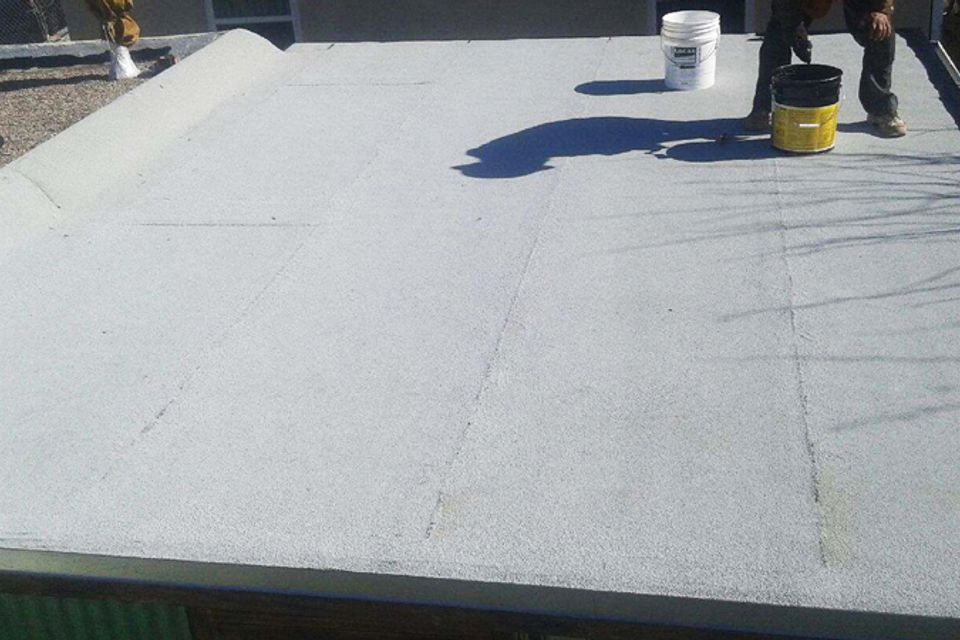
A modified bitumen roof system is a hybrid asphalt/built-up roof (BUR). It has the benefits of the built-in redundancy of the BUR, along with the added strength, flexibility and UV resistance of a modified membrane.
Modified bitumen membranes consist of an asphalt and polymer blend that allows the asphalt to take on characteristics of the polymer. There are two types of modified bitumen; APP modified bitumen (torched down) or SBS Modified Bitumen (mopped down). The two most popular surfacing options are a factory applied mineral surface and liquid applied reflective coating.
APP (Atactic Polyprophylene) is a thermoplastic polymer that forms a uniform matrix within the asphalt. This enhances the bitumen's performance by increasing its UV resistance and increasing its flexibility at low temperatures. APP modified bitumen sheets are generally applied using a propane torch. Applicators use the heat to soften the modified bitumen on the underside of the sheet. The sheet's bottom surface becomes a molten adhesive that flows upon the substrate and then cools to form a waterproof adhesive bond.
SBS (Styrene-Butadiene-Styrene) modifies the asphalt by forming a polymer network within the bitumen. SBS gives the bitumen rubber like characteristics and improved resistance to aging and weathering. SBS modified bitumen sheets are either set in hot mopped asphalt or adhered with cold process adhesives.
While modified asphalt provides the primary waterproofing characteristics of these membranes, a polyester mat adds strength and puncture resistance. Polyester has excellent elongation, tensile strength and recovery. It provides good puncture resistance and stands up well to foot traffic.
Advantages
APP (Atactic Polyprophylene) is a thermoplastic polymer that forms a uniform matrix within the asphalt. This enhances the bitumen's performance by increasing its UV resistance and increasing its flexibility at low temperatures. APP modified bitumen sheets are generally applied using a propane torch. Applicators use the heat to soften the modified bitumen on the underside of the sheet. The sheet's bottom surface becomes a molten adhesive that flows upon the substrate and then cools to form a waterproof adhesive bond.
SBS (Styrene-Butadiene-Styrene) modifies the asphalt by forming a polymer network within the bitumen. SBS gives the bitumen rubber like characteristics and improved resistance to aging and weathering. SBS modified bitumen sheets are either set in hot mopped asphalt or adhered with cold process adhesives.
While modified asphalt provides the primary waterproofing characteristics of these membranes, a polyester mat adds strength and puncture resistance. Polyester has excellent elongation, tensile strength and recovery. It provides good puncture resistance and stands up well to foot traffic.
Advantages
- Proven history
- Tough and durable roof
- High resistance to roof-top traffic
- High puncture and tear resistance - available in different thicknesses
- Excellent elongation allowing ability to accommodate building movement
- Versatile application options
- Easily maintained
